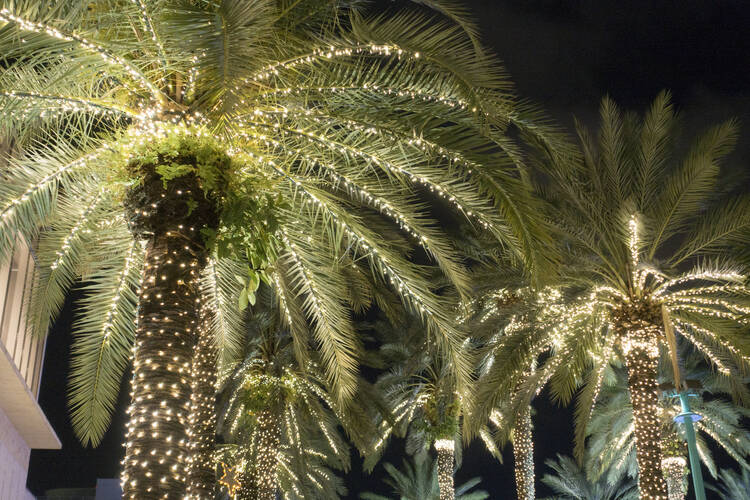One of the best things about living in Miami is Christmas. No, we do not have snow, but last time I checked, neither did Bethlehem in 6 B.C. What we do have are rich, added layers of Christmas tradition on top of the Euro-American, Currier & Ives stuff.
The Cuban cajas chinas filled with roast pig in Little Havana. The Mexican posadas processions through Homestead. Pumpkin soup joumou in Little Haiti. Jamaican reggae carols. Sweet Colombian natilla and buñuelo fritters. And the cornucopia-like Venezuelan tamales known as hallacas, their festive preparation ritual as wonderful as the food itself.
Of all the Latin American and Caribbean Yuletide customs that grace South Florida, the hallaca (ah-YAH-kah) is undoubtedly the fastest growing—for reasons both merry and melancholy. As Venezuela’s economy and democracy collapse under its socialist regime, tens of thousands of people are fleeing the humanitarian crisis there and migrating to Miami. That means not only more hallacas here at Christmas but more opportunities for non-Venezuelans to try them.
“Every holiday season we’re seeing more and more people coming in asking for hallacas who say they’ve never tried them before,” says Lorenzo Di Stefano Jr., vice president of his family’s restaurant, El Arepazo Dos, in Doral, the largest Venezuelan enclave in the United States. (Doral adjoins Miami and is nicknamed “Doralzuela.”)
“Even the Walmarts here sell the hallaca’s basic ingredients,” says Di Stefano, including harina pan, a Venezuelan cornmeal.
Hallacas are unique among the other tamales popular in Latin America.
Call me biased—my wife is Venezuelan—but hallacas are unique among the other tamales popular in Latin America. Like Christmas trees and stuffed chimney stockings, they are so replete with delights that Venezuelans make them only in December. I often liken the moment I tried my first hallaca in Venezuela more than 30 years ago to an epiphany: I rediscovered Christmas.
And I keep rediscovering it every December when family and friends gather on our patio at a long, assembly-line table to enjoy a daylong marathon of hallaca-making.
Strewn about is a panoply of European, African and indigenous Latin American foods that remind you the hallaca is a display not just of Navidad but of the New World. The heart of it all, for example—the guiso, or stew—is a Caribbean swirl of flavorful ingredients ranging from pork leg to leeks, from capers to annatto seeds.
The guiso is poured lavishly into a tawny shell of cornmeal masa. Then the fun part starts, filling the shell to bursting with meats, raisins, olives, eggs, spices and any other suitable treat that comes to mind. It is all in keeping with the spirit of the hallaca’s origins centuries ago, when slaves and servants invented it using the assorted holiday table scraps of wealthy colonial Spaniards.
But just as important as the cooking is the community—the all-hands-on-deck fiesta that blesses every hallaca with the sort of spontaneous Christmas fellowship that has been drained from too many modern American kitchens and living rooms.
The air fills with the rolling, robust rhythms of gaita—the folk Christmas music inspired in part by one of Venezuela’s patron saints, the Virgin of Chinquinquirá, or “La Chinita”—as well as the aroma of red peppers and, most of all, Caribbean rum. If you have got a political argument to vent, a ribald joke to tell, some juicy gossip to share or a warm-hearted toast to make, this is the moment.
When the hallaca can hold no more filling, it is folded and swaddled in smoked banana leaves that remind you of the lush, green palm-frond thatching of a Venezuelan beach hut. Then it is tied with string and placed in a steaming pot.
Your first bite of one on Christmas Eve makes you feel like a Caribbean version of Bob Cratchit savoring his wife’s Christmas pudding in Dickens’s A Christmas Carol.
But that tastebud revelation is also a reminder that back in Venezuela it is hard to find enough food for three meals a day, let alone hallacas for Christmas day. The hallaca was once a reflection of oil-rich Venezuela’s bounty. Today, increasingly, it is the fare of exile.
That is something an immigrant city like Miami is all too familiar with. Especially at Christmas.











